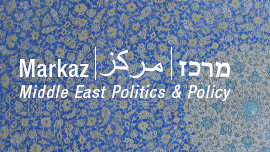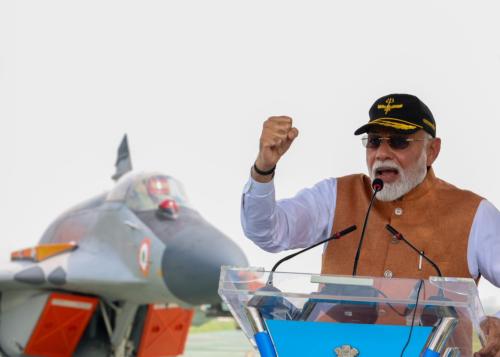What a way to start the new year. Decades of Saudi-Iranian tensions reached a new high this past week. The cycle of reactions to Riyadh’s execution of prominent Shiite cleric Nimr al-Nimr on January 2 is a reminder of how the Saudis, and their Iranian rivals, have viewed and used sectarianism throughout the tumultuous period since 2011.
Al-Nimr was arrested in 2012 and subsequently sentenced to death for allegedly “seeking ‘foreign meddling’ in Saudi Arabia, ‘disobeying’ its rulers and taking up arms against the security forces.” The arrest was meant not merely as a signal to Tehran, but at least as much to Saudi Arabia’s own Shiite minority. Shiites comprise as much as 20 percent of the Saudi population, and are concentrated in the oil-rich Eastern Province—and the community has regularly erupted in protests against its economic and political marginalization. In 2011, amid the Arab Spring uprisings in majority-Shiite Bahrain, Saudi Shiites also demonstrated for the release of long-held prisoners, and Saudi forces shot and killed several Shia in the streets.
Riyadh’s decision to carry out the death sentence was greeted with demonstrations in Iran and attacks on Saudi diplomatic facilities. This Iranian reaction must have been calculated, as al-Nimr has been on “death row” for a very long time. In response, Saudi Arabia quickly cut ties with its longtime geopolitical foe and urged fellow Sunni governments to follow suit. So far, Bahrain and Sudan have also cut off relations, and both Qatar and the UAE have downgraded them.
Governments on both sides of the Sunni-Shiite divide found a sectarian narrative useful in rallying their populations and in justifying their actions in response to the 2011 Arab uprisings. The sectarian narrative has helped the parties in this larger regional power struggle mobilize support by playing up the sectarian dimension of protests in Bahrain, the Assad regime’s crackdown in Syria, and the breakdown of inclusive politics in Iraq. Likewise, many Sunni-led countries have found sectarian rhetoric an effective way to rally Sunni citizens, intimidate their own Shiite populations, and to justify crackdowns on dissent.
Governments on both sides of the Sunni-Shiite divide found a sectarian narrative useful in rallying their populations and in justifying their actions in response to the 2011 Arab uprisings.
Last April, I wrote that Iran was likely to escalate its asymmetric efforts to destabilize Arab politics by exploiting the cracks within Arab societies. They have done so, and it is a form of escalation the Saudis are ill-equipped to match. Last summer, I suggested that the Sunni Arab states could defend best against this Iranian subversion by tamping down sectarian tensions and working to heal the rifts within their own societies through inclusive political and economic policies. So far, I have not seen much effort from the Arab Gulf states in that direction—instead, they have doubled down on divisive sectarianism in Yemen and elsewhere. As this escalatory spiral advances, civilians will pay the price.
Some are portraying the decision to execute al-Nimr as a negative Saudi response to Iranian efforts at rapprochement over the last few weeks. I do not necessarily see it that way, because the Iranians have done as much as the Gulf Cooperation Council (GCC) states to provoke and exploit tensions between the two in recent times. That notwithstanding, there is no question this execution will inflame sectarian tensions in the Gulf and Iraq, as well as present the Islamic State with new opportunities.
It has been clear for some time that the U.S. focus on the threat from the so-called Islamic State is simply not matched by the Saudis, who are far more concerned about Iran and Shiite expansionism than by this violent extremist Sunni group in their neighborhood. As such, the execution and ensuing crisis brings the clash of U.S. and Saudi interests into sharp relief and has the potential to become an inflection point in regional affairs – not necessarily because of the way the Saudi and Iranian governments choose to play, but because of how others might react.
For example, Iraqi Prime Minister Haider al-Abadi quickly and publicly condemned the execution. The execution—and the inevitable crackdown on Shiite protests in Qatif—might increase pressure on Abadi from Shiites in Iraq (and from Iran) to demonstrate sectarian preferences in his rhetoric and policy. That could prevent him from moving forward on steps Washington has been pushing to bring Iraqi Sunnis back into the political fold. This easily could threaten the anti-Islamic State campaign in Iraq, since it relies on Sunnis in Ramadi, Mosul, and elsewhere turning away from Islamic State and back toward the Iraqi state. Iraqi counterterrorism forces have taken much of Ramadi, but they cannot hold it without local Sunni support.
Increased Islamic State influence in the Arabian Peninsula would certainly challenge the Saudi government and prompt a renewed securitization of domestic policy.
The Islamic State worked hard to stoke sectarian tensions within the Gulf states over the past year, carrying out attacks on Shiite mosques in Saudi Arabia and Kuwait. The GCC leaders were not drawn in at that stage, instead expressing solidarity with their Shiite compatriots. But this time, a Sunni Gulf government is taking steps that exacerbate sectarian tensions—and that could very easily push the Islamic State to take up the issue again by attempting more such attacks. Increased Islamic State influence in the Arabian Peninsula would certainly challenge the Saudi government and prompt a renewed securitization of domestic policy. It would be an ironic outcome of a Saudi move—47 executions, mostly of Sunni extremists—that was intended to deter ISIS sympathizers. At a moment when low oil prices and a tightened financial future constrain their capacity to coopt a large, underemployed, youthful populace, this is not a recipe for stability.
The possibility that ISIS will gain from this crisis illustrates the problem with governments self-interestedly wielding that sectarian narrative is that it becomes a self-fulfilling prophecy, and it actually increases the incentive on both sides of the sectarian divide to escalate their real power competition, both directly and through proxies. Today, that narrative of sectarian conflict is far more than rhetoric in Iraq and Syria, where a true intercommunal conflict is underway.
More immediately, the ripple effects of al-Nimr’s execution spotlight American policy dilemmas in the region. The escalation in sectarian conflict threatens the nascent Syrian peace process. It increases the Islamic State’s scope for action there, threatens the political dimension of the anti-Islamic State strategy in Iraq, and incentivizes Sunni extremism in the Arabian Peninsula. It pushes the Yemen war further from resolution as well, leaving al-Qaida in the Arabian Peninsula (AQAP) with room to grow and plan attacks against the American homeland. And it puts the United States into a very tight spot as it continues diplomatic dialogue with Iran in the wake of the nuclear agreement. Given this beginning, 2016 looks to be an even tougher year for the United States in the Middle East than 2015.
The Brookings Institution is committed to quality, independence, and impact.
We are supported by a diverse array of funders. In line with our values and policies, each Brookings publication represents the sole views of its author(s).




Commentary
Saudi Arabia’s execution of al-Nimr throws U.S. policy dilemmas into sharp relief
January 8, 2016